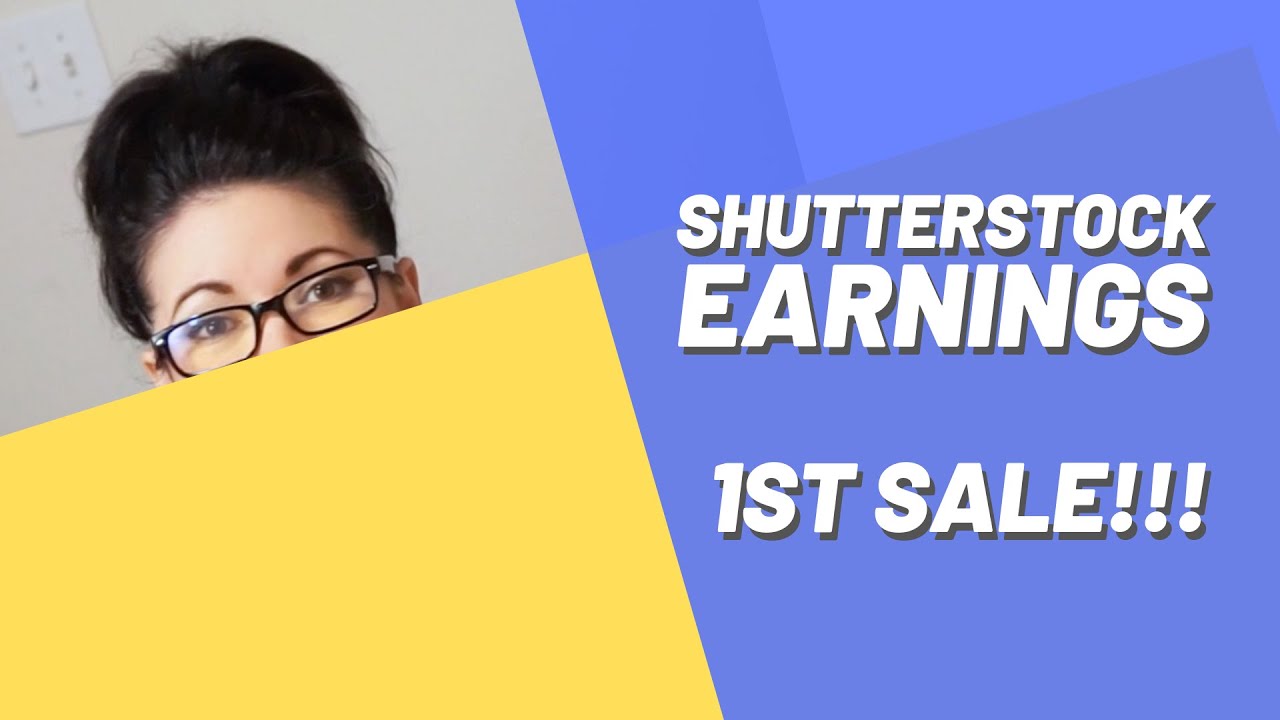Thinking about becoming a Shutterstock contributor or just curious about how much you can earn? You’re in the right place! Shutterstock is one of the biggest platforms for photographers, videographers, and artists to showcase their work and earn money. But how exactly does the payment system work? How much can you expect to make from your images or videos? In this post, we’ll break down the essentials—what you can earn, how your earnings are calculated, and some tips to maximize your income. Whether you’re new to contributing or looking to optimize your setup, understanding these basics is the first step toward turning your creative passion into profit.
How Shutterstock Pays Contributors
So, you’ve uploaded some images or videos and are wondering how the money actually gets into your pocket? Shutterstock pays contributors through a straightforward process, but there are some important details to keep in mind.
First, earnings are based on a revenue-sharing model. When someone downloads your content, Shutterstock earns revenue from the sale, and a percentage of that revenue is paid to you. The exact amount you receive depends on several factors:
- Your earnings tier: Shutterstock has a tiered system based on lifetime earnings. As your total earnings increase, your royalty rate also increases.
- Type of license: Standard licenses typically pay less than enhanced or exclusive licenses, if available.
- Download volume: The more downloads you accumulate, the higher your earnings tier and potential payout per download.
Here’s a quick overview of the typical payout process:
| Step | Description |
|---|---|
| 1. Upload Content | You submit your photos, videos, or illustrations to Shutterstock. |
| 2. Content Review | Shutterstock reviews your submissions to ensure they meet quality and content standards. |
| 3. Content Approved | Once approved, your content becomes available for licensing. |
| 4. Downloads & Earnings | When customers download your content, earnings are accumulated based on the license type and your current tier. |
| 5. Payout Threshold | Once your earnings reach the minimum payout threshold (usually $35), you can request a payout. |
| 6. Payment | Shutterstock processes your payout via PayPal, Skrill, or bank transfer, depending on your preferences. |
It’s also important to keep an eye on your dashboard for updates on your earnings and download stats. The platform offers a transparent view, helping you understand how each download affects your total income. Remember, building up your portfolio, staying consistent, and optimizing your content for search can all help boost your earnings over time. Happy uploading!
Factors Affecting Shutterstock Payment Rates
When it comes to earning money on Shutterstock, a lot of aspiring contributors wonder what exactly influences how much they get paid for each image. The truth is, several factors come into play, and understanding them can help you maximize your earnings. Let’s break down the main ones:
Quality of Your Photos
First and foremost, the quality of your images is crucial. Shutterstock prefers high-resolution, sharp, well-lit photos with clear compositions. If your images are blurry, poorly lit, or cluttered, they might be rejected or earn less. Investing time in learning photography basics—like proper lighting, composition, and focus—can really make a difference.
Image Category
Some categories tend to pay more than others. For example, images in business, technology, or health often have higher demand and pay rates because they’re used in corporate marketing and editorial content. Conversely, more niche or less popular categories might earn less per download.
Contributor Level
Shutterstock has a contributor level system—ranging from New Contributor to Elite Contributor. As you upload more high-quality images and meet certain criteria, you can move up levels. Higher levels typically unlock better royalty rates and earning potential, so consistent quality and volume can boost your income over time.
Type of License Purchased
Shutterstock offers standard and enhanced licenses. Standard licenses are more common and generally pay less per download, whereas enhanced licenses, which are used for bigger projects, command higher royalty rates. Your images’ usage type can impact what you earn.
Customer Location
Interestingly, downloads from certain regions pay differently. For example, images purchased by clients in North America or Europe might generate higher royalties compared to some other regions. This isn’t something you can control, but it’s good to be aware of how global demand influences earnings.
Market Demand and Trends
Finally, staying on top of current trends can help you create images that are in high demand. Seasonal themes, current events, or popular topics can lead to more downloads, increasing your potential earnings. Keeping an eye on Shutterstock’s trending categories can help you tailor your content strategy.
Average Earnings for Shutterstock Contributors
So, what can you realistically expect to earn from Shutterstock? Well, it varies quite a bit depending on your activity level, quality, and the factors we discussed earlier. Let’s go over some average earnings to give you a clearer picture.
For new contributors just starting out, earnings per image tend to be modest. Typically, a single download might net you anywhere from $0.25 to $2.00 during your initial months. That might not sound like much, but it’s a starting point as you build your portfolio.
As you upload more images and improve your portfolio, your earnings can increase. Many experienced contributors report average earnings per download ranging from $0.25 to $0.50 for standard licenses. If you manage to get images purchased for an enhanced license, you could earn several dollars per download—sometimes between $10 and $100 or more!
Contributor Earnings Breakdown
| Download Type | Average Royalty Rate | Typical Earnings per Download |
|---|---|---|
| Standard License | 25-30% of sale price | $0.25 – $2.00 |
| Enhanced License | 30-60% of sale price | $10 – $100+ |
It’s also important to note that Shutterstock offers a tiered royalty system based on lifetime earnings. Once you reach certain milestones, your royalty percentage can increase, leading to higher earnings per download.
Many top contributors make a full-time income from Shutterstock, earning hundreds or thousands of dollars each month. However, this level of success takes time, consistency, and a strategic approach to creating in-demand, high-quality images.
Remember, while individual earnings per image might seem small at first, building a large, diverse portfolio can significantly boost your overall income. Patience and persistence are key—stick with it, and your earnings can grow steadily over time!
Tips to Maximize Your Shutterstock Income
Thinking about boosting your earnings as a Shutterstock contributor? You’re in the right place! Making the most of your contributions requires a mix of strategic planning, quality work, and understanding how the platform works. Here are some practical tips to help you maximize your Shutterstock income:
Focus on High-Dotential Topics and Trends
Stay updated with current trends and popular themes. Shutterstock users often search for fresh, relevant content related to seasons, events, or trending topics like sustainability, technology, or health. Creating images around these themes can increase your chances of sales.
Maintain Consistent Quality
While quantity is important, quality always wins. Use good lighting, sharp focus, and appealing compositions. Invest in good equipment or editing software to enhance your images. Stock photos that look professional tend to perform better and attract repeat buyers.
Optimize Your Metadata
Use descriptive, keyword-rich titles and tags. Think about what buyers might search for when looking for your images. The more relevant your keywords, the higher the chance your images will appear in search results.
Diversify Your Portfolio
Don’t put all your eggs in one basket. Upload a variety of images—different subjects, styles, and concepts. This broad approach increases your chances of making sales across multiple categories.
Stay Active and Consistent
Regular uploads keep your portfolio fresh and increase visibility. Shutterstock’s algorithm favors active contributors, so set a schedule for uploading new content, whether weekly or biweekly.
Engage with the Community
Join Shutterstock forums or social media groups. Networking with other contributors can provide insights, feedback, and motivation. Plus, staying informed about platform updates or changes can help you adapt quickly.
Experiment with Different Formats
Explore vectors, illustrations, videos, or 3D models if you’re skilled in those areas. Diversifying your content types can open up additional revenue streams.
Leverage Promotions and Sales
Sometimes, Shutterstock runs promotions or features certain collections. If you can align your uploads with themes or campaigns, you might see a spike in views and sales.
Remember, building a successful stock photography business takes time and persistence. Keep learning, experimenting, and refining your approach, and you’ll see your Shutterstock income grow over time!
Conclusion and Final Thoughts on Shutterstock Payments
So, what’s the bottom line when it comes to Shutterstock contributor payments? Well, earning from stock photography can be quite rewarding, especially if you understand how the platform’s payout system works and put in the effort to optimize your portfolio.
Shutterstock pays contributors based on several factors, including your exclusive status, the type of license purchased, and your cumulative earnings. Generally, contributors earn a percentage of the sale price, with higher earnings possible through exclusivity or by reaching certain sales milestones.
While the pay per image might not make you rich overnight, consistent effort, strategic uploads, and attention to quality can significantly improve your income over time. Remember, many successful Shutterstock artists started with small wins and built their portfolios gradually.
It’s also worth noting that diversifying your income streams—such as offering exclusive content or exploring other stock platforms—can boost your overall earnings. Keep track of your earnings, analyze which images perform best, and adapt your strategy accordingly.
In the end, patience and persistence are key. Stock photography is a marathon, not a sprint. Stay passionate, keep creating, and enjoy the journey of turning your creativity into a steady income stream. Happy shooting!



